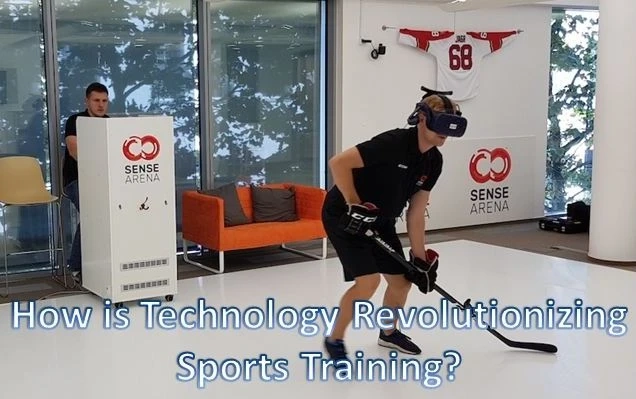Sports training used to necessitate a lot of paperwork and post-practice effort from both the trainer and the athlete. While the athlete was practicing, meticulous notes and footage were collected, which were subsequently compiled into charts and graphs that represented the athlete’s performance. After practice, the trainer and the athlete would talk about aches, pains, and thoughts regarding physical actions that had occurred earlier in the day. The approach was difficult, but it seemed to work as far as athletes and trainers were concerned. That is until recent technological advancements revolutionized the sport of athletic training.
In recent years, advanced technology has shrunk in size, become more robust, and become less cumbersome, paving the way for new options, particularly in athletics. Athletes now wear sensors that send real-time data to a trainer’s tablet, GPS pinpoints action correctly, smartphones keep everyone up to date, and wearable gear can help prevent accidents. Technology has significantly boosted athletic potential as compared to whiteboards and post-practice reviews.
Live-tracking performances, perfecting athletic moves, improving communication, and almost eliminating injuries are all examples of how technology is altering sports training.
Tracking Performance
Sports trainers can assess and track performance in real-time using sensors placed on the body or in “smart clothing” (activewear with detecting fibers woven in). From respiration and heart rate to hydration and temperature, almost everything about the athlete may be assessed.
Lasers and GPS have been used in a variety of sports training applications. Trainers can evaluate athletes’ actual location, distance, velocity, and acceleration instead of depending on times and splits to better understand where they may improve. Identifying more complex data leads to better performance with reduced stress and injury risk.
Perfecting Athletic Movements
Technology has changed and molded sports for the better. Sports technology has progressed to the point that it can generate a “digital code” for winning a gold medal. What he means is that analyzing and comparing data can lead to a gold medal performance. Technology has boosted an athlete’s prowess simply because it accentuates previously unseen performance-related behaviors and events.
Cyclists, for example, can use heads-up display (HUD) glasses to see their heart rate, speed, incline, and other important cycling data. Because riders may make modifications mid-ride, metrics like these can help cyclists focus and progress.
Swimmers and divers are involved in a highly technical sport that has included sensors in their routines. When swimming or diving, the sensors take into account more than just time and effort. They map rotational speed, diving angle, leg movement, and hydrodynamics, among other things. Observing motions like these is revolutionary, as it allows trainers to assist players in perfecting their actions. They may only improve by milliseconds, but in a race, a millisecond might make an enormous difference.
Enhancing Communication
YouTube and other video-sharing sites have also improved communication during training. Anyone can find and share many hours of workouts and games on YouTube in a matter of seconds. Athletes and trainers can upload and watch the relevant movies during practice or on their own time to supplement their knowledge by watching films or debating performances.
Other software, such as My Fitness Pal, personal digital health, food, and exercise log that can be accessed on a smartphone or computer, have improved communication. Trainers can keep track of players by using My Fitness Pal to examine their daily diet, and athletes will be held personally accountable for their training. It’s comparable to a social network site, except it’s focused on exercise, and athletes, coaches, and trainers may engage with the health data they provide.
Eliminating Injuries
The most significant benefit of technology in sports training is that injuries have been drastically decreased and can now be detected much sooner. Tracking performance, fine-tuning movements, and improving communication aren’t just nice to have; they also help to build less injury-prone situations.
Coaches and trainers can use training management software to keep track of all aspects of their training, including diet, energy, and sleep. Coaches and trainers can reduce weariness and self-inflicted injuries by defining individual practice for optimal results. Aside from uncontrollable external factors, injury-free athletics may be a reality in the future.
Visit: ij.start.canon


